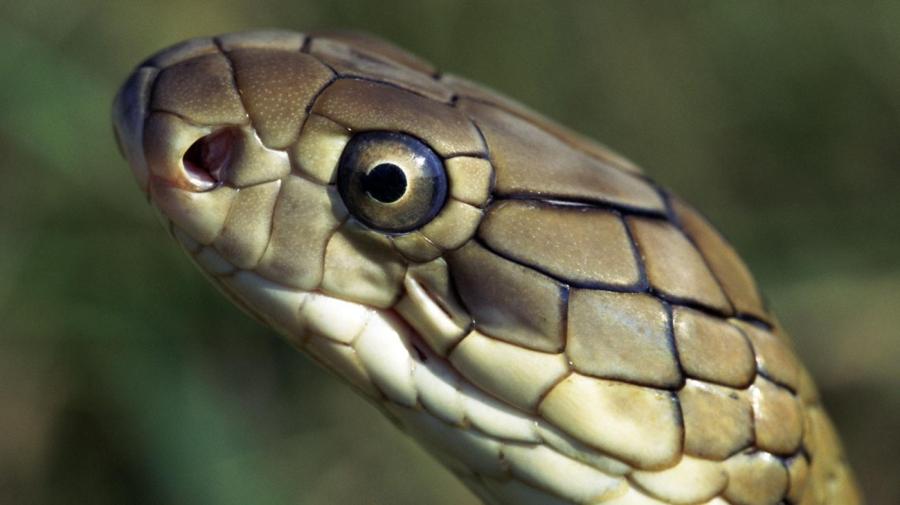What Are the Natural Enemies of the King Cobra?

King cobras do not have many natural predators, but they can be prey for mongooses, some large birds of prey and human beings, according to SnakeType.com. The primary defense mechanism of the king cobra is to raise up the front portion of the body and sway toward the threat with the hood displayed.
The king cobra is the longest venomous snake in the world, reaching up to 18 1/2 feet long. Fully grown, they can weigh up to 20 pounds. The venom of a king cobra is very dangerous to humans. They can strike very quickly from several feet away, which is why humans are bitten so often. The bite is extremely painful, but if proper medical care is given immediately, the effects of the venom can be reduced.
King cobras have venom capable of killing an elephant but prefer to avoid contact with humans. Nesting females are an exception, and they can attack without provocation. King cobras are threatened by habitat destruction and human persecution, so they are legally protected in India.
King cobras are found in heavily forested areas of India and Asia. The dense forest provides camouflage, and they are often found near bodies of water. King cobras live to be an average of 20 years old and are solitary creatures. They reach maturity at approximately four years of age and mate once per year. Mating begins each year in January and nests are built in April. Females lay from 18 to 50 eggs, which hatch 70 to 77 days later, according to BluePlanetBiomes.org.
King cobras hunt primarily at night but have been seen hunting during daylight hours. After immobilizing prey with their venom, they open their jaws to swallow their prey whole. King cobras eat lizards, frogs, small mammals and other snakes.





